A UK F-35B Lightning jet has landed on a Japanese vessel for the first time during the UK Carrier Strike Group’s Indo-Pacific deployment.
The UK Carrier Strike Group, led by HMS Prince of Wales, confirmed the event in a statement on social media, writing: “There’s a first for everything… The 1st 🇬🇧 F-35B jet lands on a Japanese ship.”
The landing took place during Operation Highmast, the UK’s seven-month Indo-Pacific mission. This week’s joint operations will see aircraft and crews from both countries exercising side by side at sea.
There’s a first for everything…
The 1st 🇬🇧 F-35B jet lands on a Japanese ship. #OpHighmast #CSG25 pic.twitter.com/87Y0vICdu8
— UK Carrier Strike Group (@COMUKCSG) August 9, 2025
Once concluded, the UK Carrier Strike Group will divide its forces. Certain elements will proceed to South Korea to take part in further bilateral activities, while HMS Prince of Wales and her escorts are scheduled to continue north-westward to Japan for the next stage of their programme.
The Royal Navy and the Japan Maritime Self-Defense Force (JMSDF) have, in recent years, made steady progress in developing their ability to operate together in the air and maritime domains.
Japan has also taken major steps to enhance its own capabilities in this area. Its Izumo-class helicopter carriers have been extensively modified to operate the F-35B short take-off and vertical landing aircraft. The conversion work has included reinforcing the ship’s structure and applying heat-resistant deck coatings designed to withstand the intense downward thrust generated during vertical landings. For both nations, the work undertaken alongside the UK Carrier Strike Group provides a practical and strategically valuable means of improving Japan’s ability to project credible maritime air power.



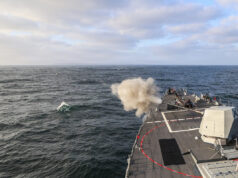
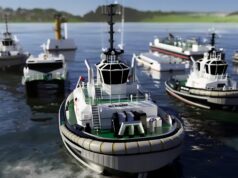
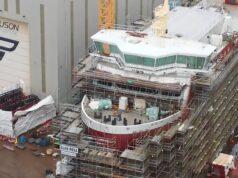
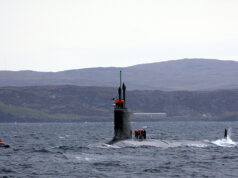
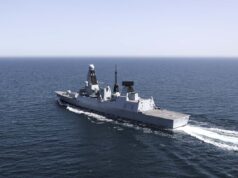


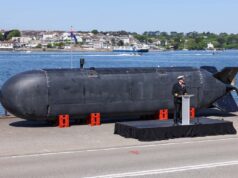
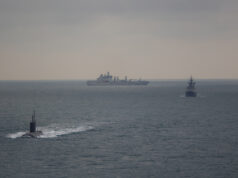
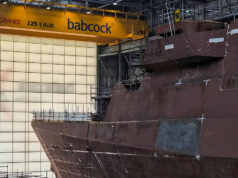

Funny how navies with far larger escort fleets put SAMs on their carriers while we bend over backwards to explain why we can’t do so for technical reasons(debris on fight deck). Izumo-class DDH here have a SeaRam in front of the island/bridge.
I’m not sure I’ve heard that as an excuse from an official source. It’s very common on such places as this tho. BS of course.
Because we have the most experience of doing it for real. And the investment has gone into our T45’s Which is the best tool for the job for fleet defence. And the carriers primary weapon systems. Aircraft. We took Sea Dart off the Invincible class to make room for more aircraft.
Which occurred in a period of relative benign threat situations for Western ships and to make up for the fact that the Invincibles were small ships never intended for the Strike role they ended up doing.
The RN removed its AAW missile systems from its carriers after learning from the largest hot navel campaign of the late 20c
They removed them over 15 years later in refits, that’s a fairly long time to decide on “learnings” and action them isn’t it? Half the lifetime of the ships?
Yes and that’s what you do.. make the changes when you can afford it in the refit cycle .. but they removed them after actual hot operational experience. And as for the Izumo class they have 2 phalanx CiW and 2 searam CIW.. which is no more effective and has no greater engagement range than say a 40mm cannon based system. It’s essentially still just a CIW system.
You are so so very wrong. In an full scale war you would do anything to defend your carriers. Its more petty mindedness excuses which we Brits do very well to save a few pennies.
Have you ever seen the British Pacific Fleet in action against Kamikaze’s in 1944-45? Suggest you have a look! 4.5″ batteries ( 8 twin turrets per carrier) blasting away till the barrels pealed paint. Same with all types of 40mm. I heard this all first hand and we can see how desperate it was on YouTube.
The Japanese Carriers have 4 CIWS one on each corner. The QE’s just 3 hoping that threadbare minimum will do. I suppose we hope we can drop into the USA and bludge a few from them if the balloon goes up.
T45’s were never enough. We said we needed 12 which was then reduced to 8 and then to 6.
We now have 8 Frigates. We built 16 T23. What happened? We sold 3 to Chile leaving us with 13. What remained? They were over worked needed massive refits costing a fortune and never replaced until we start in 2027/28 if all is well.
I never know how those in the know can sleep at night.
fairly sure, it’s more because of bean counters than any technical reasons
Not really, the Invincibles had a Sea Dart launcher as built and the RN spent a fair amount of cash removing them from the carriers to replace them with extra deck parking space.
How much of that was a combination of trying to maximise Harrier operations from the Invincibles for a “Strike” role they weren’t really intended for, and how much of that was down to the relatively benign threat environment for Western navies post Cold War 1? From memory didn’t some of the other options for the CVF have some missile defence capability?
Just going to point out that the Sea Darts where removed after the RN’s experience in the rather non-benign waters off the Falklands and leave it at that.
who is talking about Invincible class?
plenty of room on QE class ie 65k tons vs 22k tons
Yes but every square foot is taken up by F35’s. 👀
I take it providing context is a bit beyond your grasp? Or are you just upset that the context shows that there is a thought process behind not having SAM systems on the QE’s beyond “money”?
Given they were removed from 1998 to 2000, that seems like a bit of a “lag” from a wartime experience in 1982? Particularly as removing it and its magazine improved flight deck space and stores, would have thought a more active program to remove them and improve flight operations would have been the result of experience, not waiting half the lifetime of the ships?
The question arises as to how effective they considered Sea Dart by 1998/2000 and more importantly would be over the next 5 to 10 years of post refit life with all the support costs of so doing and previously proposed substantial upgrades cancelled. It was a system already waiting to be replaced. With the planned replacement of the T-42s with T-45 and gradual redundancy of the system on their prime platform as such, and of course in the glow of post Soviet Europe and Glasnost etc I would presume by 2000 it was considered (as a convenient refit took place) that their removal was a fair compromise. Don’t think decisions like this are simply black and white it’s a combination of factors with timing and threats as well as support and capability all relevant ones.
Yep. The Invincibles had a bow mount in front of the ramp offering an arc of fire of >180 degrees, so with the midships starboard mount having 180 and the port side stern one the same there was reasonable coverage. A wave of 4 incoming missiles from 2 aircraft could have been defended against.
The QEC’s don’t have a bow mount so they really need 4 to get the same coverage and they could face 16 missiles that are faster and more stealthly and lower flying than those of 30 years ago. It is only cost that has not filled those spots and it’s discraceful. If is the same reason why the T23 upgrade from 32 Sea Wolf went to only 32 CAAM when that space is large enough for 128.
Funny how the RN actually removed a AAW system from its carriers..because after actually being the only nation to engage in a full fleet action for a long time, the RN decided it got in the way of fast jet operations.
But the question is what does sea ram CIWS give you over a good 40-57mm gun option. Nothing really. So the issue is not so much why have they not put something like sea ram on the carrier is why is the organic inner layer only 3 30mm cannons. What it really should have is a couple of ultra rapid 76mm ( with guided rounds ) backed up by a few 40mm cannons. That is a decent organic inner layer, what it does not need is to waste space and time for missiles that support the outer layers..as that is what the escorts are for.
SeaRam has a 5+ mile range & is guided, so that is an edge over those guns, whose AA capabilities are generally far shorter than max surface range. It’s fine relying on escorts until you’re caught without any or they’ve been put out of action.
I actually like the idea of 76 +57 or 40mm layered AA defence, but it’s yet to be prooved v incoming AShMs. What I’d like to see is SeaCeptor or similar on the QEs & the 30mm replaced by 40mm.
40mm should be doable, they’ve put it on the back of a truck with the Tridon. There should be space for Exls/6 silo CAMM on the starboard midships where the current Phalanx area is if it got built out a bit. Cheaper alternatives might be to upgrade the decoy launchers to new Ancilia, which could be made into a hybrid decoy/Martlet (ER) launcher or a naval adaption of Gravehawk/Raven to take Asraam.
The 76mm with guided rounds is profoundly accurate.. remember these are essentially micro missiles that can be fired off at a high rate if fire, it’s designed to deal with sea skimming AShms and very quick reaction times out to about the 10 mile range.
*Japanese Destroyer.
Very clearly a destroyer, come on.
It is a destroyer that is how the Japanese class them. They are DDHs
Infact they are DDH183 and DDH184
I know, that’s the joke I was making lol
But we know why they are called destroyers, not carriers, it’s political and historical considerations to get them past legal barriers into service not literal descriptions of what they actually are. They have the same problem with ‘offensive strike missile systems’ which they are presently doing cartwheels to get around. We aren’t restricted by that (since through deck cruisers anyway) so should describe them as what they actually are I feel to give clarity over obscuration.
Indeed, but we do have to respect the fact they have designated them destroyers. In reality the designations that navies give are alway arbitrary and contextual.. don’t forget there were escorts in the US that in their service lives had been designated frigates, destroyers and finally cruisers. Infact the whole USN designation between about 1950 and 1975 was a bit messed, with the large cruisers and a new build of large escort ships all becoming destroyer leaders ( DL/DGL) in 55 the US decided to designate these large escort destroyers as frigates.. even though they kept the DL/DGL and were bigger than everyone else’s frigates while the small destroyers DD/DDG retained the destroyer designation..then they had ocean escorts which were essentially slow destroyers and design DE/DEG then in they decided to create a new frigate type Patrol frigate PF ( which was everyone else’s frigates.. and they could not just use frigate because they were calling their cruiser sized destroyers frigates…by 1975 everyone was completely confused because the US has frigates sized frigates and cruiser sized frigates that had Destroyer numbers… they went on a massive merry go around and designated all the larger frigates ( with destroyer designation numbers ) into cruisers and everything else as either a destroyer or frigate.. all related to size. As for the RN they had frigates and destroyers all over the shop… some frigates did air defence some did ASW..some destroyers did ASW some air defence..some were bigger than some frigates some smaller… some destroyers even actually did the Job of cruisers and were acknowledged as replacements but called destroyers….
So in reality all you can do is accept the designation as given..then discuss the capabilities as being cruiser like or carrier like…after all the Italians have built an off shore Patrol vessel that is 6000 tons and will be able to shoot down ballistic missiles and has a towed array and we can say it’s essentially a full fat ASW/AAW frigate equivalent.. so the Japanese have a Destroyer that has the capability of a carrier and assault ship… many nations are building 14,000 ton destroyers that in any other age would be described as capital ships so we can if we wish say that destroyer is close to the modern equivalent of a battle cruiser..but the pedantic individual can also correctly point out they are sill designated destroyers…all a bit silly really.
They’re as much a “Destroyer” as the Invincibles were “Through deck Cruisers”. Their primary role is to carry & operate aircraft/Helicopters.
Don’t forget the Russians designated all their carriers as cruisers… designations are both a bit arbitrary and contextually driven.
Ah but, was it deliberate or did it get lost ?
“anyone fancy an Indian ? nah, lets have a Japanese tonight”.
#day 1
Sorry but for me it’s a no brainer to maximise defensive capabilities on every ship
You’re not alone on this. It’s highly suss and they want to put more and more high tech stuff on these carriers. So money is there. It’s fine leaving the bigger air /sea coverage for the T45s and other escorts, we all get that. That’s a no brainer too. For a comparison of what could be just look at the upcoming French PA-NG carrier.
Kaga ?
You haven’t heard of the layered air defence system then? And very well thought out and praticed tactics. Any enemy would have a very hard time even finding a carrier let alone targeting, tracking and engaging one. All the while trying to evade the most capable networked air defence system ever to put to sea. And 5th gen air power. As an ex-Matelot, I’d feel very safe onboard a QE class carrier.
The only problem with that is the availability of our T45s, only one escorting POW on this cruise which is inadequate. We removed Sea Dart from Invincible to increase the limited flight deck space. Our Carriers should have Sea RAM in place perhaps of the 30mm mounts never installed?
*Carrier….
Well would you believe it, if you trusted the media scum they had us set for war against them recently.
Who are you to call people scum?